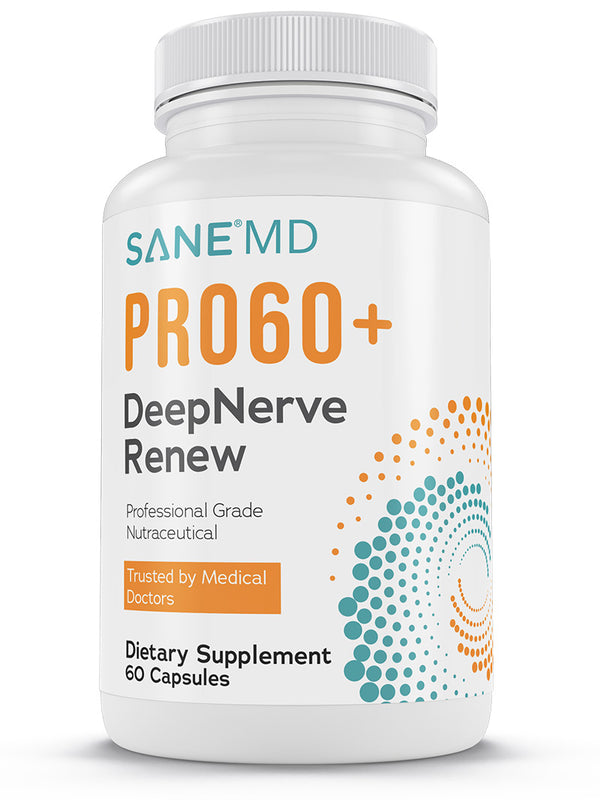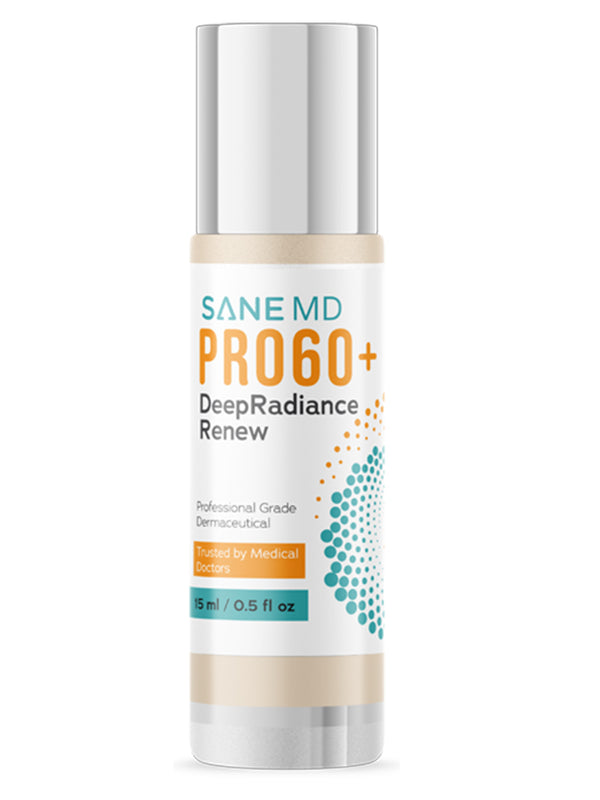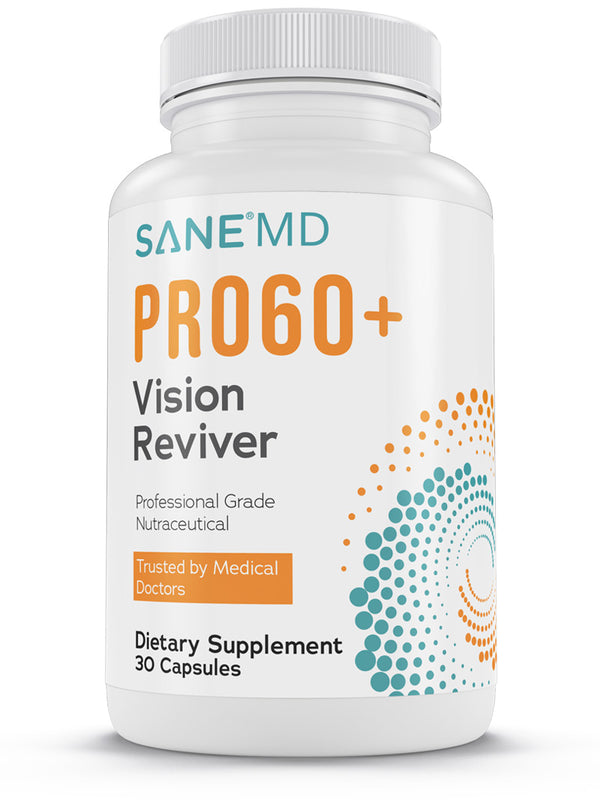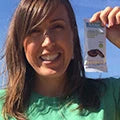Postbiotics, prebiotics, and probiotics -- the three Ps, as they're called -- are crucial for health and survival.
Their effects go well beyond the digestive system to affect numerous areas of health, including the immune response, inflammation, mood, brain function, and so much more.
Though they sound similar and have interdependent actions, they each play unique roles in the body.
What About Postbiotics?
You've probably heard of probiotics and prebiotics but may be unaware of postbiotics.
That's okay.
By the end of this article, you'll get to know them very well.
Suffice to say, for now, that postbiotics were discovered just a few years ago -- and research suggests that they could be a game-changer in gut health.
We will discuss postbiotics and the other Ps in a second, but first, we need to set the stage upon which they play their roles.

What is the Gut Microbiome?
The gut microbiome refers to the estimated 30 trillion to 100 trillion microbes that live in your digestive tract (1a). Most of these microbes, which are primarily made up of bacteria, are located in the colon.
Your microbiome is composed of both beneficial and potentially harmful microbes. The majority of these microorganisms are friendly and have a symbiotic relationship with the body, meaning they both benefit from each other. There are, however, some microbes that are pathogenic, which means that they can make people sick.
In a healthy person, both types of microbes live and work together without causing any problems. However, unpleasant symptoms and illness can happen if the microbial balance is upset.
How the Gut Microbiome Affects the Human Body
The bacteria in the microbiome affect the human body in many ways, including by helping us digest our food, regulating our immune system, protecting us from disease-causing bacteria, and synthesizing several B vitamins essential for a healthy brain and body. They also make vitamin K, which is required to finish making certain proteins that are needed for the blood to clot properly.
Not long ago, scientists and other experts thought that gut bacteria only affected the digestive tract.
But recent advances in microbiology have revealed a diverse gut microbiome capable of affecting numerous human body areas. (1)
Consider this:
- An estimated 70% of the immune system is located in the gut. (2)
- Around 90% of the body's serotonin -- abrainneurotransmitter -- is made by gut bacteria. (3)
- The estrobolome, a group of microbes in the gut, metabolizes and regulates estrogen. This means that they may influence the development of estrogen-related conditions, such as breast cancer, endometriosis, and even weight gain. (4)
It's undeniable that the above three (and more) have access to the rest of the body; otherwise, they wouldn't be located in the gut. And there is scientific proof.
Researchers have found that the gut and brain communicate via the enteric nervous system (ENS), a vast network of neurons lining the intestinal tract, and the vagus nerve.
(The longest nerve of the autonomic nervous system, the vagus nerve extends down from the brain stem, through the neck, and into the chest and abdomen.
In this way, it affects nearly every organ system in the human body.)
Gut Bacteria and Health

Numerous health conditions are associated with poor gut health, including (5, 6)
- Bloating
- Diarrhea
- Constipation
- Inflammatory bowel diseases, i.e., ulcerative colitis, Crohn's disease
- Diabetes
- Obesity
- Cancers
- Chronic heart diseases
- Autism
- Liver diseases
- Rheumatoid arthritis
- Kidney disease
- Allergies
- Fatigue
- Headaches
- Anxiety
- Depression
- Mood swings
- Skin problem, i.e., eczema, psoriasis
- Multiple sclerosis
- And more
Now that we've got the basics out of the way, let's discuss each of the three Ps.
What are Probiotics?
The term "probiotics" refers to live bacteria and yeast that are beneficial to the human body, particularly the digestive system. The most common misconception regarding these microorganisms is that they are germs that cause diseases. However, your body contains both friendly and unfriendly bacteria. Probiotics are friendly bacteria that play an essential role in maintaining the health of your gastrointestinal tract.
You can add probiotics to your digestive system by eating more fiber foods, taking probiotic supplements, or eating probiotic foods like sauerkraut or yogurt.
As previously mentioned, good bacteria (probiotics) help digest food, extract nutrients, synthesize specific vitamins, support health, defend against numerous diseases, and much more.

Sources of Probiotics
Probiotic Supplements
Probiotic supplements are popular these days and easily accessible. They come in capsules, soft gels, tablets, and powders. Unfortunately, though there are many different strains, most probiotic supplements only contain two,Lactobacillus and Bifidobacterium,which may not be enough to improve gut health.
Dietary Sources of Probiotics
You can also get probiotics through your diet by eating fermented foods, including:
- Sauerkraut
- Kefir
- Yogurt. Not all yogurts are fermented. Only those with live cultures are fermented. You can find this information on the label.
- Pickled cucumbers

What are Prebiotics?
Prebiotics are foods that feed the trillions of microbes living in your colon. Usually, these foods are high in soluble fiber that, when consumed, is converted into a gel that nourishes the gut microbes. During this feeding process, the fiber ferments, resulting in the production of postbiotic metabolites that provide numerous health benefits.
Sources of Prebiotics
Prebiotic Supplements
There are a wide variety of prebiotic dietary fiber supplements today. They come in capsules, tablets, powders, and more. Please follow dosage instructions on the bottle or package, and remember to start slowly. Taking too many prebiotic supplements too quickly can cause intense digestive upsets.
Prebiotic Foods
Prebiotics are found in many fruits, vegetables, and resistant starches and include:
- Dandelion greens
- Bananas
- Oats
- Asparagus
- Barley
- Leeks
- Onions
- Garlic
If you're not accustomed to eating a high-fiber diet, you'll want to increase your intake of prebiotic foods slowly. Otherwise, you risk significant gas, bloating, stomach pains, nausea, diarrhea, and other signs of digestive upset.
What are Postbiotics?
Postbiotics are the result of the interaction between probiotics and prebiotics. You see, when probiotics eat (ferment) prebiotics, they excrete postbiotic metabolites, bioactive compounds that have been shown to provide numerous health benefits.
There are hundreds of postbiotic metabolites that provide varied benefits, including:
- Short-chain fatty acids (SCFAs): acetic, propionic, and butyrate.9: They provide essential functions in your body. Specific SCFAs may reduce your risk of cancer, gastrointestinal disorders, cardiovascular disease, and much more. (7, 8)
- Glutathione11: May reduce the risk of several diseases - including diabetes, cancer, and rheumatoid arthritis - by reducing oxidative stress. (9, 10) (Oxidative stress in the cells occurs when the body cannot fight off free radicals sufficiently.)
- Vitamin K: Essential for proper blood clotting and bone metabolism. It also regulates blood calcium levels. (11)
- Phytoestrogens: equol, enterolactone, enterodiol: Mimics the female hormone estrogen in the body, which can modulate the symptoms of menopause. (12, 13)
- B-vitamin synthesis (biotin, cobalamin, folates, nicotinic acid, pantothenic acid, pyridoxine, riboflavin, and thiamine): These vitamins are essential to health and life. They play a huge role in cardiovascular health, hormones and cholesterol production, proper nerve function, energy levels, brain function, and more. (14)
Short-chain fatty acids are arguably the most critical postbiotic metabolites, as they've been shown to have the most beneficial effects on physical, mental, and emotional health. This is particularly true of Butyrate.
Health Benefits of Postbiotics -- Specifically Butyrate
Notice how we didn't list the health benefits of prebiotics and probiotics above? That's because researchers believe that postbiotics provide most of the benefits commonly attributed to the other Ps.
Here are just a few of the many benefits of butyrate:
- Immune system support
- Weight Management
- Blood sugar regulation
- Increased metabolism
- Enhanced growth of healthy bacteria
- Reduced inflammation
- Stabilized mood
- Decreased symptoms of depression and anxiety
- Leaky gut repair
- Reduced diarrhea symptoms
- Improved digestive function
- And much, much more!
Another health benefit is that it may reduce the risk of one of the most common types of cancers -- Colon cancer.

How to Get More Postbiotics
22 Best Postbiotic Food Sources
Because postbiotics are the end products of bacterial fermentation of fiber in the lower colon, the optimal way to increase postbiotics in your gut is by consuming a combination of probiotic and prebiotic fiber foods. The foods that can help significantly boost postbiotics in your digestive system include:
• Acacia gum.
• Artichokes.
• Asparagus.
• Brewer’s Yeast.
• Buttermilk.
• Cottage cheese.
• Fermented pickles.
• Fermented sauerkraut.
• Garlic.
• Green, raw bananas.
• Kefir.
• Kimchi.
• Kombucha.
• Legumes.
• Miso soup.
• Oats.
• Onions.
• Seaweed.
• Sourdough bread.
• Tempeh.
• Whole grains.
• Yogurt.
In addition, postbiotic supplements are being produced and used as dietary supplements. For example, SANE Viscera-3® uses revolutionary technology to deliver the postbiotic butyrate directly into the lower colon, bypassing the bacterial fermentation processes so that it can immediately address your gut health issues.
Why It's Better to Supplement with Butyrate
However, eating prebiotic fiber and probiotic foods doesn't usually result in a significant amount of Butyrate, the postbiotic that Harvard doctors call the "optimal" short-chain fatty acid for the gut, noting that it provides more health benefits than other postbiotics.
You see, Butyrate is the least prevalent short-chain fatty acid produced by microbial fermentation, and you'd have to eat an incredible amount of fiber to get enough of this postbiotic in your system.
And even if you managed to eat enough fiber, you would suffer terrible gas, bloating, and stomach upset.
So, the best way to get enough butyrate is to take it in supplement form.
But there are many problems with most forms of supplemental butyrate.
First of all, besides smelling and tasting terrible, eating butyrate wouldn't even work if you could choke it down because it's a very unstable molecule that has what's called a very short half-life, meaning that it is rapidly metabolized in your stomach and upper intestine.
So, no matter how much of it you try to eat, it can't get into your lower colon where it needs to do its job. In other words, you COULD consume as much butyrate as you want. But you will not absorb any of it.
But now, thanks to a new patented scientific breakthrough, you can get all these incredible butyrate benefits in one quick, easy, and even pleasant step delivered directly into your lower colon, which is the only place it's going to be beneficial for your body.
Introducing Viscera-3: A Revolutionary POSTBiotic with Faster and More Powerful Results than Probiotics and Prebiotics
Thanks to a huge scientific breakthrough, we have taken three butyrate molecules and attached them to a glycerol molecule, which allows tasteless and odorless delivery of potent and fresh butyrate directly into your lower colon, where it works to deliver all of these incredible health benefits to you.

And even better, we've made it time-released to supercharge its absorption and positive impact on your energy, digestion, focus, immune system, mood, and even your waistline.
And it does it quickly, efficiently, and effectively. This wildly popular gut-health postbiotic formulation is available now.

Click here to learn more and to place your order while supplies last!
References
1- https://www.ncbi.nlm.nih.gov/pmc/articles/PMC3983973/
1a- a- https://pubmed.ncbi.nlm.nih.gov/26770121/
2- https://livewellzone.com/gut-health-and-hormones/
3- https://livewellzone.com/gut-health-and-hormones/
4- https://livewellzone.com/gut-health-and-hormones/
5- https://www.ncbi.nlm.nih.gov/pmc/articles/PMC4425030/
6- https://www.ncbi.nlm.nih.gov/pmc/articles/PMC4036413/
7- https://pubmed.ncbi.nlm.nih.gov/26963409/
8- https://pubmed.ncbi.nlm.nih.gov/16633129/
9- https://pubmed.ncbi.nlm.nih.gov/19381356/
10- https://pubmed.ncbi.nlm.nih.gov/21058502/
11- https://pubmed.ncbi.nlm.nih.gov/9167138/
12- https://www.ncbi.nlm.nih.gov/pmc/articles/PMC4189015/
13- https://pubmed.ncbi.nlm.nih.gov/9167138
































